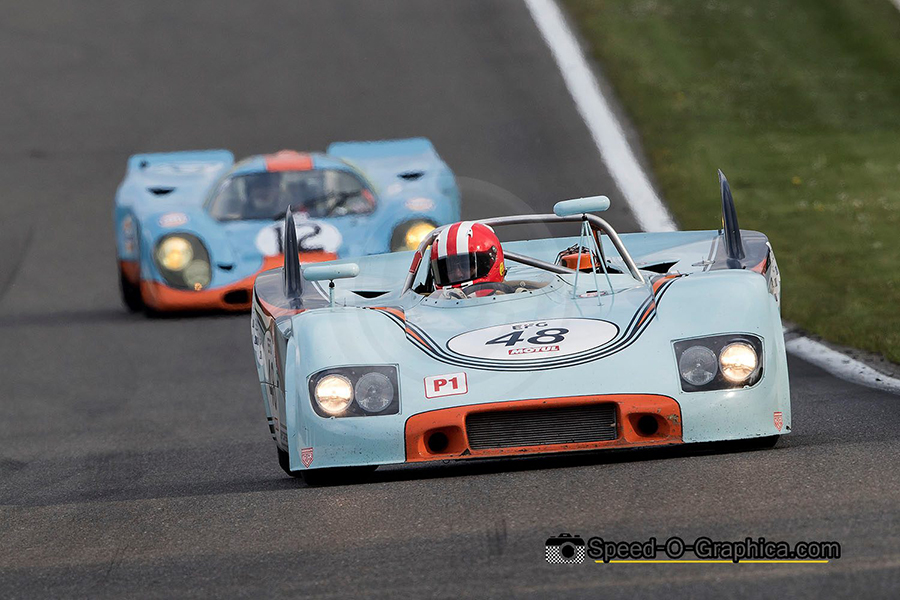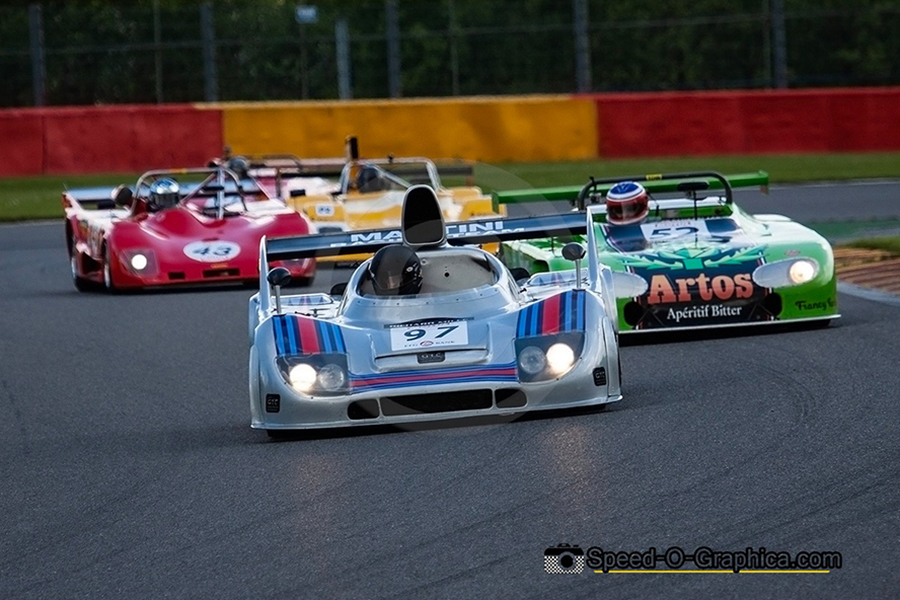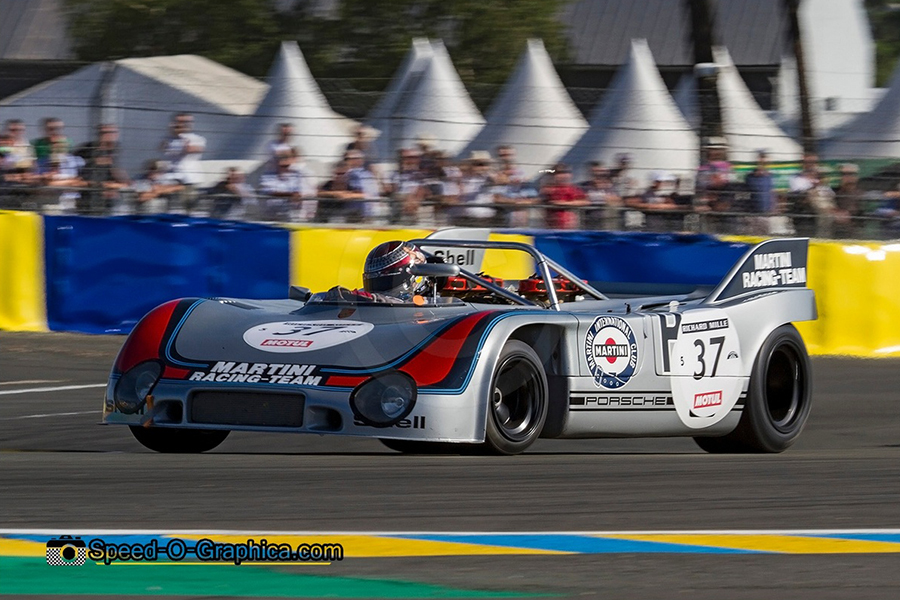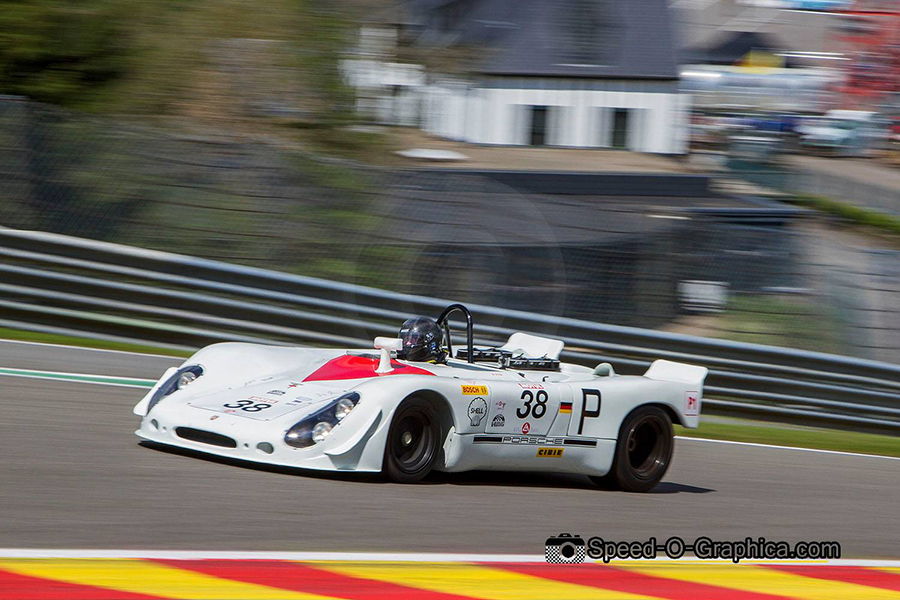Sportscars from the 60s & 70s: Porsche 908, Part 2

In our second part of the Porsche 908 retrospective, we look back at the ultra lightweight 908/2 Spyder.
In 1969, Porsche took full advantage of revised technical regulations in the World Sportscar Championship which no longer stipulated a minimum weight. Further weight savings were achieved as neither a windscreen nor a spare wheel were required. These changes effectively paved the way for the transition to the roofless Spyder.
Porsche also decided to switch to an aluminum tubular frame instead of the steel and later aluminum frame that was initially used on the 908/1. The stripped-down Porsche 908/2, with a body weighing just thirteen kilograms, had a total weight of just 600 kilograms.
Porsche introduced the 908/02 in 1969 as the ultra-lightweight Spyder version. It arrived with an open cockpit and was available with two different bodies. One was traditionally shaped and the other featured a wedge shape, nicknamed ‘Flunder’.
Visually, the 908/02 K Spyder and the 908 K Flunder Spyder were very similar. The difference was mainly in the bodywork between the front and rear wheel. For those with an interest in chassis numbers, we can also mention that the non-Flunder 908 Spyders were built with chassis numbers beginning with 908/02-*** as the rest were converted from 908/01s from the first generation. Just a few Flunder Spyders had a 908/02 chassis.

At the 24 Hours of Le Mans in 1969, Porsche introduced the Flunder Spyder LH, in fact a 908 Flunder Spyder equipped with a longer tail. Porsche also developed a Longtail version featuring two prominent tail fins for high speed tracks such as Spa, Monza, Le Mans and Daytona. Tail fins were used to reduce the impact of side winds.
Although the 908 received a new front end and some other modifications for 1969, the car struggled at the start of the racing season. All five factory Porsche 908 LHs retired during the 24 Hours of Daytona due to engine failure. Porsche, however, recovered and the three-litre 908 began to dominate race tracks, earning victories at Brands Hatch, Monza, the Targa Florio, Spa-Francorchamps and the 1000 km race at the Nürburgring.
However, what was still missing on Porsche’s wish list was victory at Le Mans. In principle, the Porsche 917 was set to claim victory in the world’s most important endurance race, although it proved uncontrollable, especially at higher speeds. It was so dramatic that Porsche’s factory drivers refused to race the 917. Instead they preferred the 908 for the Le Mans 24 Hours in 1969.
In the race, the 917s initially took the lead, but with about four hours left on the clock the 908s were in front and it remained exciting until the chequered flag, with Jackie Ickx and Jackie Oliver’s Ford GT40 going on to win the race and sending the Porsche 908 driven by Hans Hermann and Gérard Larousse to second place. Nevertheless, the 908/02 ultimately emerged as one of the most successful Porsches ever and in 1969 it resulted in Porsche’s first Makes World Championship.

For slower race tracks and twisty circuits, Porsche introduced the compact and agile 908/03 in 1970, based on the 990 Bergspyder and equipped with a completely new tubular frame. With a weight of just 540 kg and equipped with a flat-eight three litre engine, the agile 908/03 had a top speed around 275 km/h.
Another thing that stood out about the 908/03 was the position of the driver, who was positioned on the right-hand side of the car to ensure better weight distribution on the predominantly clockwise circuits the car was to race on.
Porsche immediately took 2 important victories with the 908/03 in 1970 – the Targa Florio (Jo Siffert/Brian Redman) and the 1000 km on the Nürburgring (Vic Elford/Kurt Ahrens) were won by the ultra light spyder.
Porsche decided not to use the 908/03 cars after the race on the Nürburgring and at the end of the season they were sold to private teams who raced them with several successes until 1974. Some cars were equipped with a 2.1 litre turbo engine for 1975 and entered in the three litre class.
Nowadays the 908 still appears in historic motor racing events, where enthusiasts of this special Porsche can still enjoy it.

